

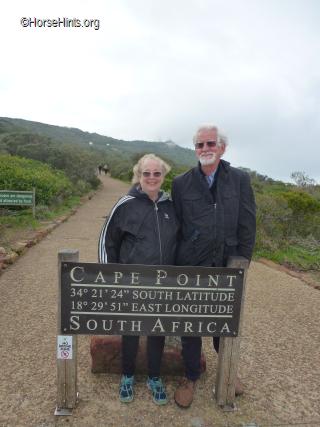
"At the tip of the Cape Peninsula 60 km south-west of Cape Town, lies Cape Point, a nature reserve within the Table Mountain National Park; a declared Natural World Heritage Site. South Africa's Cape coast attracts thousands of local and international tourists each year to witness the Indian and Atlantic oceans splashing together - or so they believe...Cape Point, an hour's drive from Cape Town, cashes in on the visitors who flock to witness this supposed natural phenomenon. An estimated 800,000 people a year visit its spectacular cliffs, lighthouses and 'Two Oceans curio shops.
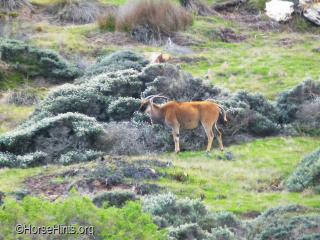 However, the residents of Cape Agulhas - over 100km east of Cape Point - insist that visitors wanting to see the confluence of the two oceans will have to travel a little further south ...Encompassing 7,750 hectares of rich and varied flora and fauna; abounding with buck, baboons and Cape Mountain Zebra as well as over 250 species of birds, Cape Point is a nature enthusiast paradise and rugged rocks and sheer cliffs towering more than 200 meters above the sea and cutting deep into the ocean provide a spectacular background for the Parks' rich bio-diversity. Cape Point falls within the southern section of Table Mountain National Park. The natural vegetation of the area, fynbos, comprises the smallest but richest of the world's six floral kingdoms.
However, the residents of Cape Agulhas - over 100km east of Cape Point - insist that visitors wanting to see the confluence of the two oceans will have to travel a little further south ...Encompassing 7,750 hectares of rich and varied flora and fauna; abounding with buck, baboons and Cape Mountain Zebra as well as over 250 species of birds, Cape Point is a nature enthusiast paradise and rugged rocks and sheer cliffs towering more than 200 meters above the sea and cutting deep into the ocean provide a spectacular background for the Parks' rich bio-diversity. Cape Point falls within the southern section of Table Mountain National Park. The natural vegetation of the area, fynbos, comprises the smallest but richest of the world's six floral kingdoms.
The scenic beauty of Cape Point is not its sole allure; it is also an international icon of great historical interest with many a visitor drawn to the area because of its rich maritime history. Named the 'Cape of Storms' by Bartolomeu Dias in 1488; the 'Point' was treated with respect by sailors for centuries. By day, it was a navigational landmark and by night, and in fog, it was a menace beset by violent storms and dangerous rocks that over the centuries littered shipwrecks around the coastline. In 1859 the first lighthouse was completed; it still stands at 249 meters above sea-level on the highest section of the peak and is now used as the centralized monitoring point for all the lighthouses on the coast of South Africa.
Access to this historical building is by an exhilarating ride in the wheelchair accessible Flying Dutchman funicular that transfers visitors from the lower station at 127 meters above sea level, to the upper station at 286 meters above sea level."
Music: "Only Time" by Enya Listen ad-free with YouTube Red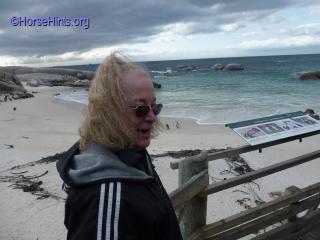
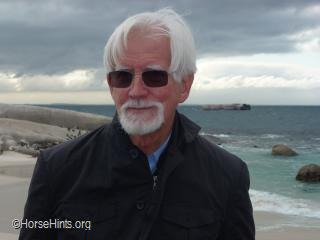
"Cape Point is a promontory at the southeast corner of the Cape Peninsula, which is a mountainous and scenic landform that runs north-south for about thirty kilometres at the extreme southwestern tip of the African continent in the Republic of South Africa. Table Mountain and the city of Cape Town are close to the northern extremity of the same peninsula. The cape is located at 34&°21'26?S 18°29'51?E Coordinates: 34°21'26?S 18°29'51?E, about 2.3 kilometres (1.4 mi) east and a little north of the Cape of Good Hope on the southwest corner. Although these two rocky capes are very well known, neither cape is actually the southernmost point of the mainland of Africa; that is Cape Agulhas, approximately 150 kilometres (93 mi) to the east-southeast.
PeaksThe peak above Cape Point is higher than that above the Cape of Good Hope. The rugged sandstone (Table Mountain sandstone) ridge that rises from Cape Point at sea level develops into two peaks. There is a major peak that dominates the skyline locally but there is also a smaller peak about 100 m (328 ft) further south. The higher peak has the old lighthouse on the top. The Flying Dutchman Funicular runs from a car park to the north up to slightly below the level of the old lighthouse and a short flight of steps leads to a viewing platform around the base of the lighthouse. From the end of the railway a second path leads to the lower peak.
LighthouseA map of the Cape Peninsula showing its major features. Cape Point is the small cape jutting out towards the east from The Cape of Good Hope at the southern end of the Peninsula. The Lighthouse is on Cape Point, rather than on the Cape of Good Hope to the west.
Cape Point Old Lighthouse
The new lighthouse is at a lower elevation (87 meters; 285.5 feet above sea level), for two reasons: the old lighthouse, located at 34°21'12?S 18°29'25.2?E (262 meters; 859.6 feet above sea level), could be seen 'too early' by ships rounding the point towards the east, causing them to approach too closely. Secondly, foggy conditions often prevail at the higher levels, making the older lighthouse invisible to shipping. On 18 April 1911, the Portuguese liner Lusitania was wrecked just south of Cape Point at 34°23'22?S 18°29'23?E on Bellows Rock for precisely this reason, prompting the relocation of the lighthouse. The new lighthouse, located at 34°21'26?S 18°29'49?E, cannot be seen from the West until ships are at a safe distance to the South. The light of the new Cape Point lighthouse is the most powerful on the South African coast, with a range of 63 miles (101 km; 55 nmi) and an intensity of 10 megacandelas in each flash.
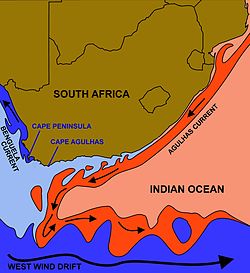 The courses of the warm Agulhas current (red) along the east coast of South Africa, and the cold Benguela current (blue) along the west coast. Note that the Benguela current does not originate from Antarctic waters in the South Atlantic Ocean, but from upwelling of water from the cold depths of the Atlantic Ocean against the west coast of the continent. The two currents do not 'meet' anywhere along the south coast of Africa, except as random eddies from the two currents, that arise and intermingle west of Cape Agulhas. Cape Point is situated within the Table Mountain National Park, within a section of the park referred to as Cape of Good Hope. This section covers the whole of the southern tip of the Cape Peninsula and which takes in perhaps 20% of its total area. The Cape of Good Hope section of the park is generally wild, unspoiled and undeveloped and is an important haven for seabirds. The vegetation at Cape Point consists primarily of Peninsula Sandstone Fynbos.
The courses of the warm Agulhas current (red) along the east coast of South Africa, and the cold Benguela current (blue) along the west coast. Note that the Benguela current does not originate from Antarctic waters in the South Atlantic Ocean, but from upwelling of water from the cold depths of the Atlantic Ocean against the west coast of the continent. The two currents do not 'meet' anywhere along the south coast of Africa, except as random eddies from the two currents, that arise and intermingle west of Cape Agulhas. Cape Point is situated within the Table Mountain National Park, within a section of the park referred to as Cape of Good Hope. This section covers the whole of the southern tip of the Cape Peninsula and which takes in perhaps 20% of its total area. The Cape of Good Hope section of the park is generally wild, unspoiled and undeveloped and is an important haven for seabirds. The vegetation at Cape Point consists primarily of Peninsula Sandstone Fynbos.
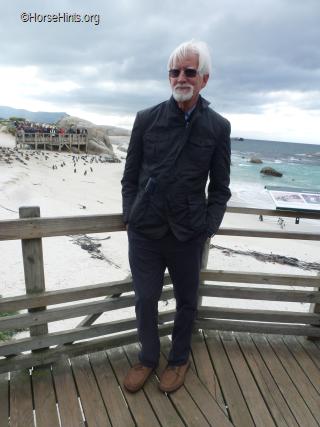 Cape Point is often mistakenly claimed to be the place where the cold Benguela Current of the Atlantic Ocean and the warm Agulhas Current of the Indian ocean collide. In fact, the meeting point fluctuates along the southern and southwestern Cape coast, usually occurring between Cape Agulhas and Cape Point. The two intermingling currents help to create the micro-climate of Cape Town and its environs. Contrary to popular mythology, the meeting point of the currents produces no obvious visual effect; there is no "line in the ocean" where the sea changes colour or looks different in some way. There are, however, strong and dangerous swells, tides and localized currents around the point and in adjacent waters. These troubled seas have witnessed countless maritime disasters in the centuries since ships first sailed here.
Cape Point is often mistakenly claimed to be the place where the cold Benguela Current of the Atlantic Ocean and the warm Agulhas Current of the Indian ocean collide. In fact, the meeting point fluctuates along the southern and southwestern Cape coast, usually occurring between Cape Agulhas and Cape Point. The two intermingling currents help to create the micro-climate of Cape Town and its environs. Contrary to popular mythology, the meeting point of the currents produces no obvious visual effect; there is no "line in the ocean" where the sea changes colour or looks different in some way. There are, however, strong and dangerous swells, tides and localized currents around the point and in adjacent waters. These troubled seas have witnessed countless maritime disasters in the centuries since ships first sailed here.
Fishing is good along the coast but the unpredictable swells make angling from the rocks very dangerous. Over the years scores of fishermen have been swept to their deaths from the rocky platforms by freak waves. False Bay, which opens to the east and north of Cape Point, is the location of the well-known naval port of Simon's Town. The bay is also famous - or infamous - for its great white sharks, which hunt the Cape fur seals that live in the area.
Climate ResearchCape Point is the site of one of the Global Atmosphere Watch's atmospheric research stations. In the early years of the 20th century icebergs from Antarctica were occasionally sighted from Cape Point. There have been no authentic recent sightings of ice, which some climatologists and experts have attributed to global warming. ..."